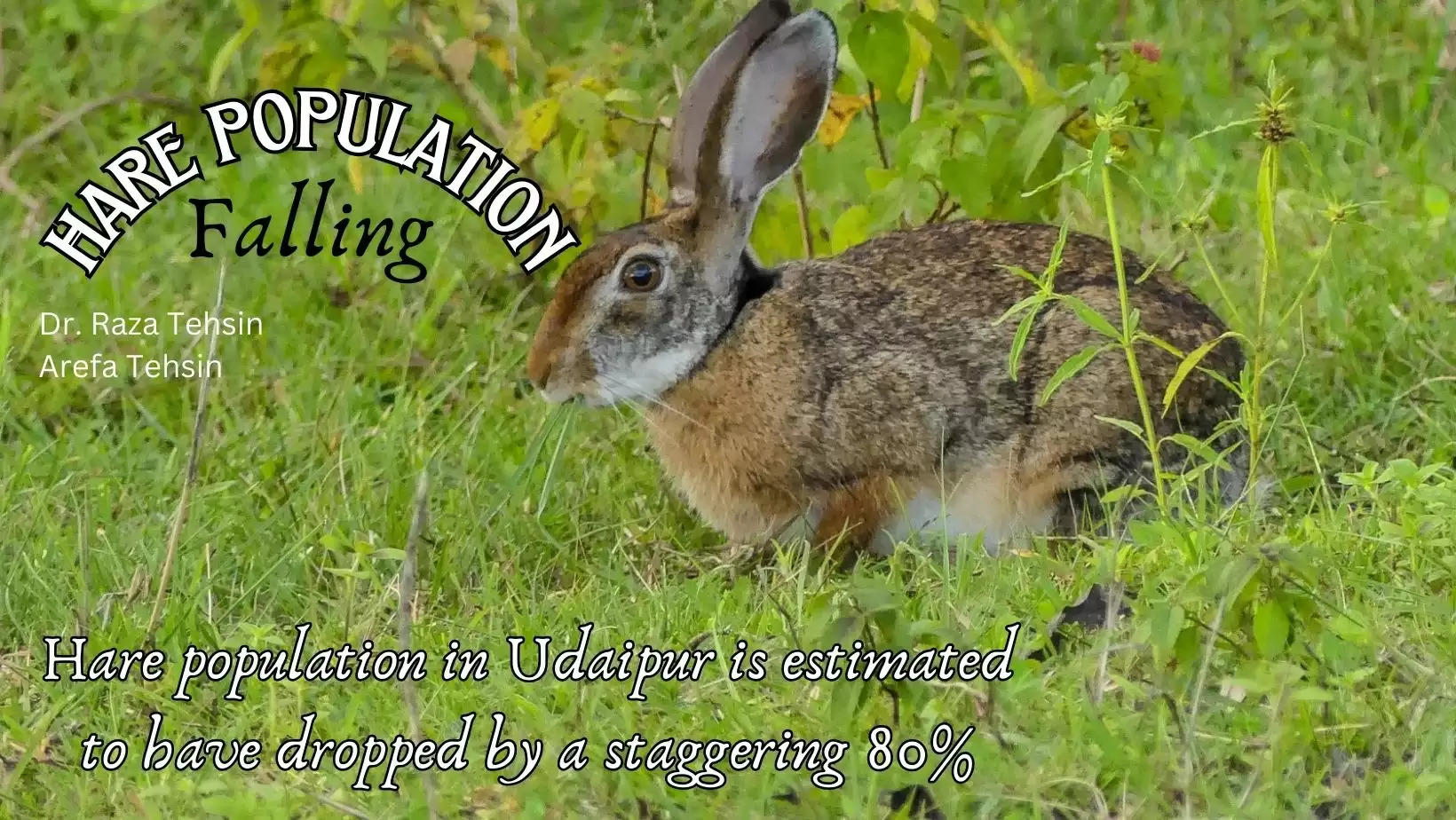Falling Hare Population
In the open forests and fields around Udaipur alone, other than the wildlife sanctuaries, the hare population is estimated to have dropped by a staggering 80%.
Hares were found in aplenty in the Indian jungles, but their numbers have reduced drastically, which is indicative of the ailing state of our forests. In the open forests and fields around Udaipur alone, other than the wildlife sanctuaries, the hare population is estimated to have dropped by a staggering 80%.
Hares are a staple diet to anyone with canines in the animal kingdom—from jackals to hyenas, from leopards to humans. And not to forget the gliding raptors in the sky who descend at times to swoop away a hare. Hares breed profusely, competing with rats in reproduction, and provide an almost fat-free meat supplement to all those who fail to get their teeth or claws on a bigger, juicier meal. They are an easy prey and a good population of hares in a forest shows its wellbeing. Though they are not a wise choice as survival food because they have a very low fat content, their protein laden hopping muscles are a sure way to keep one from starving.
The reasons for the decline of hares are many. The food on which it survives is mainly rajka (green fodder) and doob (soft grass, not the coarse one). The farmers don’t grow much rajka anymore due to shortage of water. The excessive use of underground water by bore-wells has led to reduction in water levels causing less capillary rise of water. Since sufficient water doesn’t reach the surface, green fodder and doob don’t grow as their roots don’t reach deep down.
The other reason for their decline is hunting and trapping. Hare dishes are sold on roadside dhabas for around Rs.300 per dish, a substantial amount of earning for a small eatery.
Apart from trapping, there have been many innovative ways adapted by humans to hunt hares, including nets. One of the easiest methods is to put a snare and wait for a hare to get entangled in it. Another method adapted by villagers and tribals in Rajasthan is to sit well-camouflaged under a deep shade in a green pasture on a full moon night. Hares come out to eat the green grass and one or two invariably go grazing towards the shade. When a hare approaches, the villager throws a stone near it. Alarmed, the hare hops towards the shade away from the moonlight to avoid detection by a possible predator. As soon as it is in striking distance, the villager hits it with a lathi (baton) killing it on spot. Once a popular method to hunt hares, it might still be prevalent in the interiors.
There was yet another intriguing method invented to kill hares. Two men would go out in the wilderness on a dark night with an erect bamboo mat. A lantern hung at the front of the mat and the men walked behind the mat in the shadow, to avoid being seen. One of them would hold the mat while the other a lathi (baton) in one hand and ghunghroo (tiny bells) in another. This created a strange aura of light and sound. Curiosity would invariably get the better of a hare or two and they would approach it to check it out. A swing and whack of the lathi… and they were transported to the happy hunting grounds. Or maybe just to the cooking pot of the villager duo.
With the hares more dropping than hopping now, the man animal conflict is on the rise. The food chains are breaking, resulting in food shortage and subsequent dwindling of small carnivores.
One needs a bit of will and not a lot of money to solve this problem. In plains throughout India, after every 10km, areas of three to four hectares can be enclosed with a three feet high wall. The local vegetation in this enclosure can be left as it is with sufficient supply of water and manure to grow rajka and doob. Two to three pairs of hares can be released inside. With shelter, food and no predation, these prolific breeders will rapidly grow in numbers. They can be periodically released in fields and open forests. Other than breeding them, the authorities should implement strict restrictions on their poaching.
A healthy population of hares would not only decrease man-animal conflict but also increase the population of carnivores like small cats, which are dependent on hares, and provide a fall-back to larger ones like leopards.
To join us on Facebook Click Here and Subscribe to UdaipurTimes Broadcast channels on GoogleNews | Telegram | Signal



